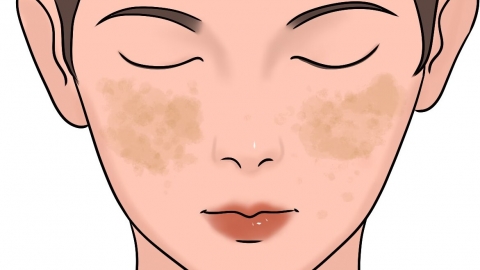What causes spots on a child's face and how to address them?
Generally, spots on a child's face may be caused by genetic factors, unhealthy lifestyle habits, allergic reactions, eczema, pityriasis alba, and other reasons. It is recommended to seek timely medical advice and, under a doctor's guidance, undergo general treatments or medication treatments. Detailed analysis is as follows:

1. Genetic Factors
If parents or other family members have similar spots, the child's probability of inheriting related genes increases. Under certain conditions, these genes may affect melanocyte function, causing excess melanin production, thereby forming facial spots. Genetic factors are difficult to completely avoid, but it is important to ensure the child practices sun protection, reducing ultraviolet radiation to the skin and lowering the likelihood and severity of spots.
2. Unhealthy Lifestyle Habits
Long-term late nights and irregular sleep schedules may lead to endocrine disorders, affecting the normal metabolism of melanin, thus forming facial spots. Maintain healthy lifestyle habits in daily life, ensure sufficient sleep, avoid staying up late, engage in appropriate exercise, and promote metabolism.
3. Allergic Reactions
Contact with allergens such as pollen or pet hair may cause inflammatory reactions on the skin, leading to skin pigmentation and the above-mentioned conditions. It may also be accompanied by symptoms such as redness and itching. Under a doctor's guidance, medications such as loratadine syrup, cetirizine hydrochloride drops, or calamine lotion may be used for treatment.
4. Eczema
Eczema is usually caused by the interaction of internal and external factors, including heredity, hormonal changes, infections, and poor living environments. These factors may lead to skin inflammation, causing facial spots, often accompanied by symptoms such as erythema and papules. Follow medical advice to use medications such as vitamin E cream, hydrocortisone cream, or mometasone furoate cream for treatment.
5. Pityriasis Alba
Pityriasis alba may be related to dry skin, malnutrition, vitamin deficiency, intestinal parasitic infections, and other factors. Once the skin barrier function is compromised, combined with external stimuli, it may trigger inflammatory reactions on the skin, affecting melanocyte function, reducing melanin synthesis, and resulting in pale white patches. Symptoms such as white scales and dry skin may also appear. Under a doctor's recommendation, medications such as urea cream, compound vitamin B tablets, or clotrimazole cream may be used for treatment.
In daily life, it is important to cultivate good living habits in children, such as keeping the face clean without over-cleansing, avoiding prolonged screen exposure to reduce radiation effects on the skin, which helps lower the risk of developing facial spots.




